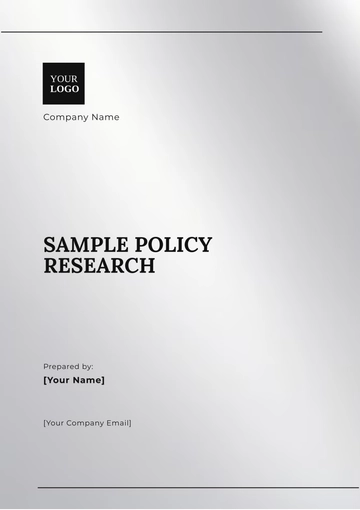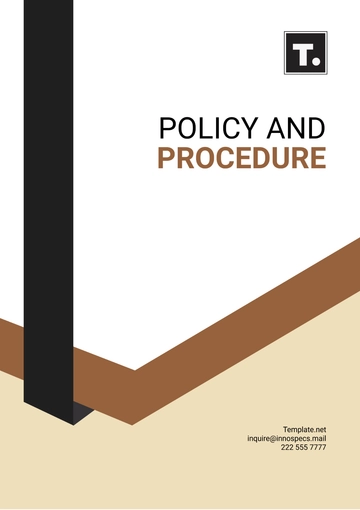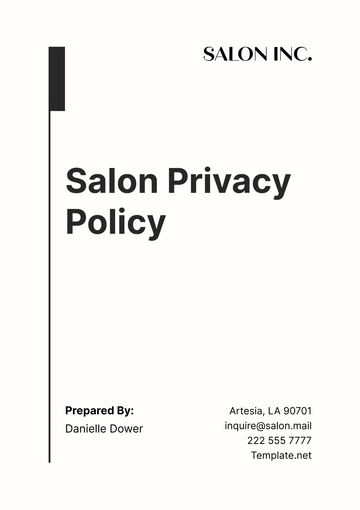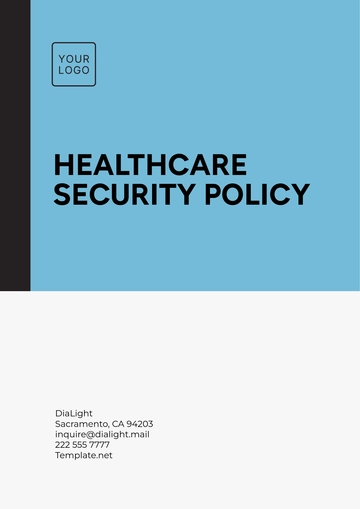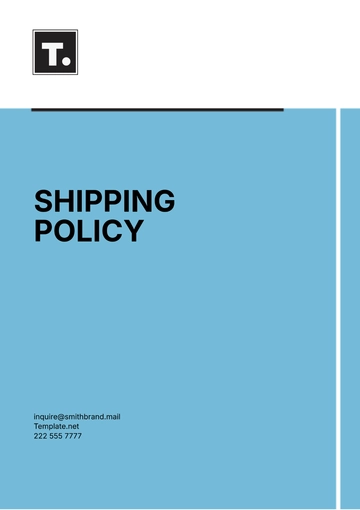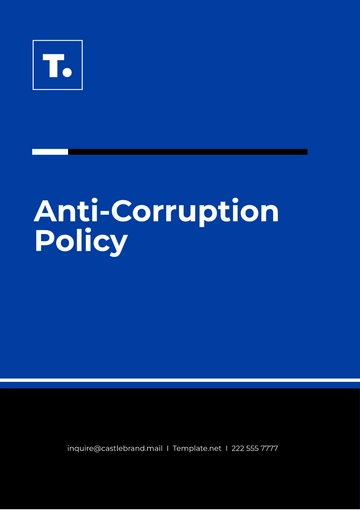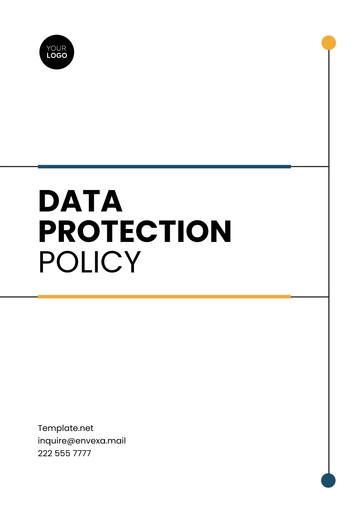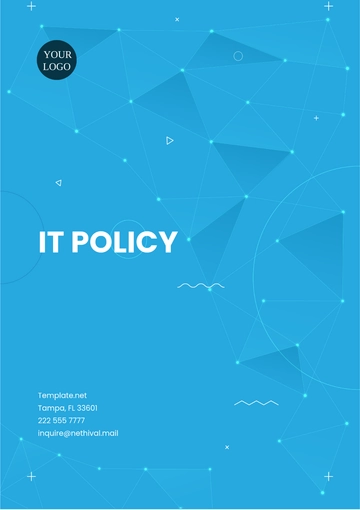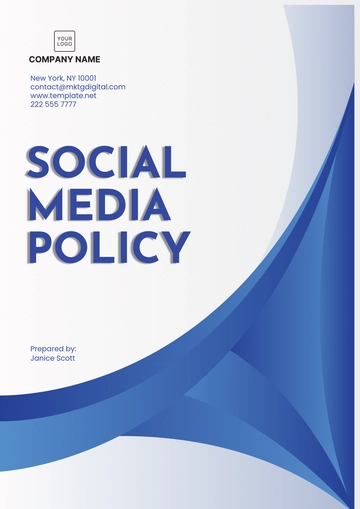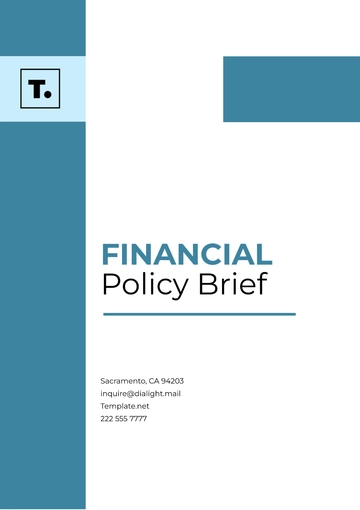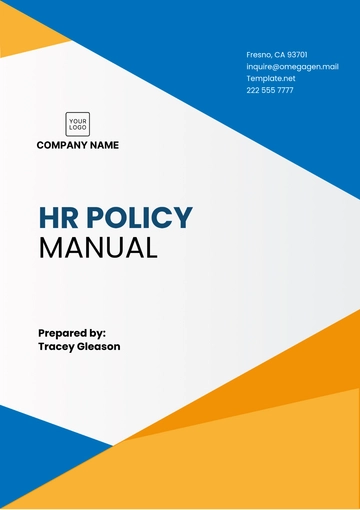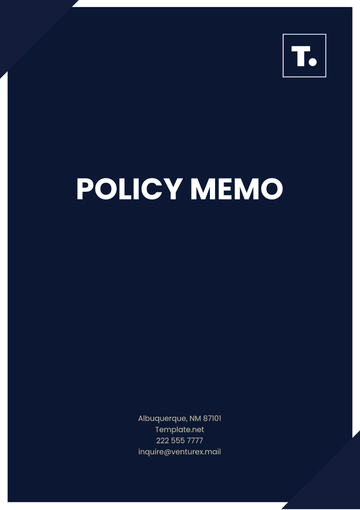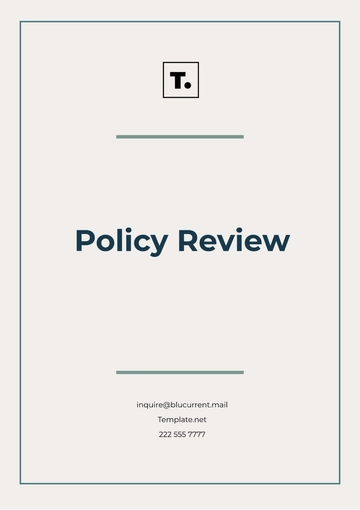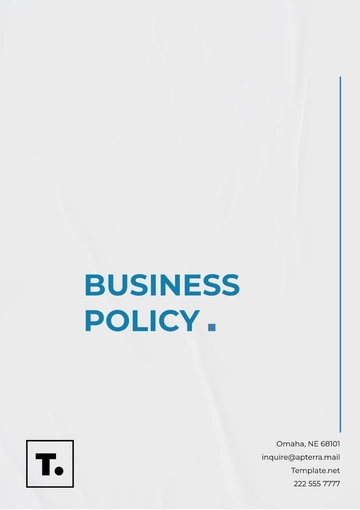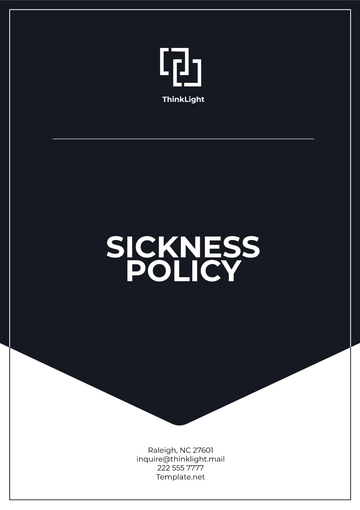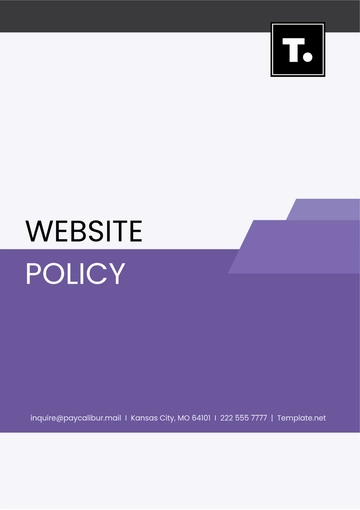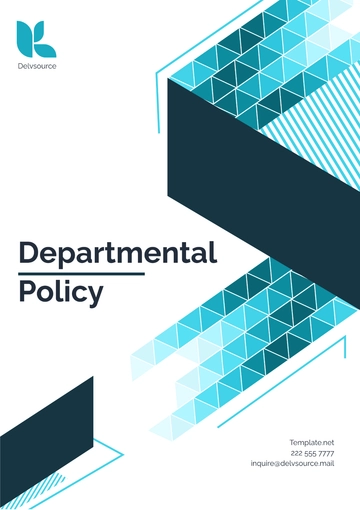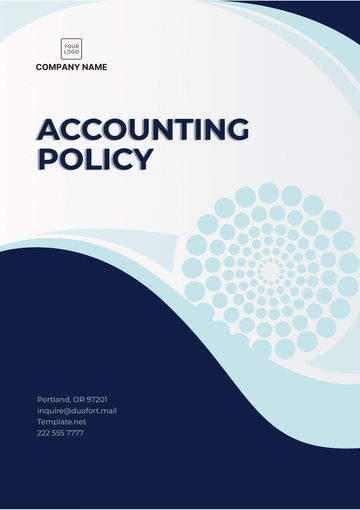Free Non-Profit Policy

Effective Date: January 1, 2050
Version: 1.0
I. Introduction
The Non-Profit Policy of [Your Company Name] serves as a comprehensive framework for governing the operations and conduct of the organization. As a non-profit entity dedicated to environmental conservation and sustainable development, our goal is to advance our mission while adhering to the highest standards of ethical conduct, financial stewardship, and operational transparency.
This Policy document delineates the principles and practices that guide our governance, financial management, human resources, ethical conduct, fundraising, and stakeholder relations. By adhering to these principles, [Your Company Name] aims to foster a culture of integrity, accountability, and public trust, ensuring that every action taken supports our mission and enhances our impact.
II. Purpose
The purpose of this Policy is to establish a robust framework that ensures [Your Company Name] operates with integrity, accountability, and efficiency. Specifically, this Policy aims to:
Promote Ethical Conduct: Foster a culture of ethical behavior and decision-making at all levels of the organization.
Ensure Financial Accountability: Guarantee that resources are used effectively and in alignment with the organization’s mission.
Comply with Legal Requirements: Adhere to all relevant laws and regulations governing non-profit organizations.
Enhance Transparency: Provide clear and accurate information regarding operations, financials, and organizational performance.
Strengthen Stakeholder Engagement: Build and maintain positive relationships with donors, volunteers, beneficiaries, and the community.
III. Scope
This Policy applies to all individuals and entities associated with [Your Company Name], including:
Board Members: Individuals serving on the Board of Directors, responsible for governance and oversight.
Employees: Individuals employed by [Your Company Name] across various departments and levels.
Volunteers: Individuals who contribute their time and expertise without financial compensation.
Contractors: External service providers engaged for specific tasks or projects.
Donors and Beneficiaries: Individuals and organizations that contribute resources or benefit from the organization’s services.
Compliance with this Policy is mandatory. All stakeholders are expected to understand and adhere to the guidelines outlined herein.
IV. Governance Structure
A. Board of Directors
The Board of Directors is the highest governing body of [Your Company Name] and bears ultimate responsibility for ensuring the organization’s adherence to its mission and values. The Board’s structure and functions are detailed below:
1. Roles and Responsibilities
The Board of Directors performs a range of critical functions, including:
Strategic Direction: Establishes and approves the organization’s strategic goals and objectives, ensuring alignment with the mission.
Oversight: Monitors the performance of the Executive Director/CEO and the organization’s programs, finances, and compliance with legal and ethical standards.
Risk Management: Identifies and evaluates potential risks, ensuring that appropriate risk management strategies are in place.
Policy Development: Formulates and updates organizational policies to guide operations and decision-making.
Fundraising and Resource Development: Assists in securing financial support and resources for the organization’s activities.
2. Composition and Terms
Number of Directors: The Board shall comprise a minimum of [7] and a maximum of [15] members, ensuring diverse perspectives and expertise.
Term Limits: Directors serve [3]-year terms, with the possibility of reappointment for up to [2] consecutive terms. This ensures a balance between continuity and fresh perspectives.
Leadership Roles: The Board elects a Chairperson, Vice-Chairperson, Secretary, and Treasurer from among its members. These roles are crucial for facilitating Board meetings and overseeing specific areas of governance.
3. Committees
To enhance governance efficiency, the Board may establish committees, each with specific responsibilities:
Finance Committee: Responsible for overseeing financial policies, budgeting, and financial reporting.
Audit Committee: Ensures the integrity of financial reporting and oversees the audit process.
Governance Committee: Focuses on Board member recruitment, orientation, and evaluation of governance practices.
Fundraising Committee: Develops and implements fundraising strategies and oversees donor relations.
B. Executive Leadership
The Executive Director or CEO is responsible for managing the daily operations of [Your Company Name] and implementing the strategic vision set by the Board. Key responsibilities include:
Operational Management: Oversees all aspects of organizational operations, including program delivery, staff management, and resource allocation.
Strategic Implementation: Executes the strategic plan approved by the Board, ensuring that goals and objectives are achieved.
Reporting: Provides regular reports to the Board on organizational performance, financial status, and program outcomes.
Staff Development: Leads and supports the development of a high-performing team, including hiring, training, and performance management.
V. Financial Management
A. Fiscal Responsibility
Ensuring sound financial management is critical to the success and sustainability of [Your Company Name]. This section outlines key financial policies and practices:
1. Financial Policies
[Your Company Name] adheres to comprehensive financial policies designed to maintain accountability and transparency:
Budgeting: Annual budgets are prepared based on departmental needs, organizational priorities, and projected revenue. The budgeting process includes input from all departments and approval by the Board.
Expenditure Controls: All expenditures must adhere to pre-approved budgets and require proper documentation and authorization.
Revenue Management: All sources of revenue, including donations, grants, and earned income, are tracked and reported accurately.
2. Budgeting Process
The budgeting process is a collaborative effort involving multiple stages:
Preparation: Department heads prepare budget proposals based on anticipated needs and goals. These proposals are reviewed by the Finance Committee.
Review and Approval: The Finance Committee reviews the draft budget, making recommendations for adjustments as necessary. The final budget is presented to and approved by the Board of Directors.
Monitoring: Monthly financial reports are reviewed to track performance against the budget, and adjustments are made as needed to address any variances.
3. Internal Controls
Effective internal controls are essential for preventing financial mismanagement and ensuring accuracy:
Authorization: All financial transactions must be authorized by designated individuals based on the level of expenditure.
Segregation of Duties: Key financial functions, such as approval, recording, and reconciliation, are separated to reduce the risk of errors or fraud.
Audit Trails: Detailed records are maintained for all financial transactions, allowing for comprehensive audits and reviews.
B. Financial Reporting
Regular and transparent financial reporting is crucial for maintaining stakeholder trust:
Income Statements: These reports summarize revenues, expenses, and net assets, providing insight into the organization’s financial performance over a specific period.
Balance Sheets: Provides a snapshot of the organization’s financial position, including assets, liabilities, and equity at a specific point in time.
Cash Flow Statements: Details the inflows and outflows of cash, highlighting the organization’s ability to generate cash and meet its obligations.
C. Fund Allocation
Proper allocation of resources ensures that [Your Company Name] effectively supports its mission:
Programmatic Spending: At least [75%] of total revenue is allocated directly to program services and initiatives that advance the organization’s mission.
Administrative Costs: Administrative expenses are capped at [15%] of total revenue to ensure that overhead is kept within reasonable limits.
Fundraising Expenses: Costs associated with fundraising activities should not exceed [10%] of total revenue, ensuring that fundraising efforts are efficient and cost-effect.
VI. Ethical Conduct
A. Code of Ethics
The Code of Ethics for [Your Company Name] outlines the standards of behavior expected from all individuals associated with the organization:
Integrity: All actions and decisions must be made with honesty and integrity, reflecting the organization’s values and commitment to ethical conduct.
Transparency: Openness in communication and operations ensures that stakeholders are informed and can trust the organization’s actions.
Confidentiality: Protection of sensitive information is paramount. This includes maintaining confidentiality regarding donor information, beneficiary data, and internal discussions.
Fairness: All individuals are treated fairly and with respect, without discrimination or bias. Decisions are made based on merit and objective criteria.
B. Conflict of Interest
1. Policy Overview
A conflict of interest occurs when personal interests could potentially interfere with an individual’s responsibilities to [Your Company Name]. To manage conflicts, the organization requires:
Disclosure: All potential conflicts of interest must be disclosed by Board members, employees, and volunteers. This includes financial interests, relationships, or other factors that could influence decision-making.
Recusal: Individuals with a conflict must recuse themselves from participating in discussions or decisions related to the conflict.
Review: The Governance Committee reviews disclosed conflicts and determines appropriate actions to address and manage them.
2. Disclosure Process
The process for disclosing conflicts of interest involves:
Annual Disclosure: Board members and staff are required to complete a Conflict of Interest Disclosure Form annually, updating any changes in their financial interests or relationships.
Situational Disclosures: Individuals must disclose any conflicts that arise during their involvement with the organization, promptly notifying the Board or relevant committee.
C. Whistleblower Protection
[Your Company Name] is committed to providing a safe environment for reporting unethical behavior:
Reporting Mechanisms: Whistleblowers can report concerns through an anonymous hotline or secure email system. Reports can be made confidentially and without fear of retaliation.
Protection Against Retaliation: Individuals who report misconduct are protected from any form of retaliation, including dismissal, discrimination, or harassment.
Investigation: Reports of unethical behavior are investigated promptly and thoroughly. Appropriate actions are taken to address any confirmed issues and prevent recurrence.
VII. Fundraising and Donor Relations
A. Ethical Fundraising
Fundraising efforts must adhere to high ethical standards to maintain donor trust and support the organization’s mission:
Transparency: Clear and accurate information is provided to donors regarding how their contributions will be used. All fundraising materials must reflect the organization’s mission and goals.
Accountability: Donor funds are used solely for the purposes for which they were raised, and financial reports are provided to donors as required.
Privacy: Donor information is confidential and protected. It will not be shared with third parties without the donor’s consent.
B. Donor Recognition and Stewardship
1. Acknowledgment
Acknowledging donor contributions is a key component of maintaining positive relationships:
Receipt Issuance: Donors receive formal tax receipts for their contributions, providing proof of their donation for tax purposes.
Thank-You Communications: Personalized thank-you letters or cards are sent to donors, expressing gratitude for their support and detailing the impact of their contributions.
2. Reporting to Donors
Regular communication with donors is essential for demonstrating the impact of their support:
Impact Reports: Detailed reports are provided to major donors, outlining the outcomes achieved through their contributions.
Newsletters: Periodic newsletters update all donors on the organization’s activities, successes, and future plans.
Events: Special events or meetings may be held to engage donors and provide updates on the organization’s progress.
C. Fundraising Activities
Diverse fundraising strategies are employed to secure resources for [Your Company Name]’s programs:
Grant Writing: Applications are submitted to foundations, government agencies, and other funding sources to support specific projects or general operations.
Crowdfunding: Online platforms are used to raise funds from a broad base of small donors for particular initiatives or campaigns.
Events: Fundraising events, such as galas, auctions, and community activities, are organized to engage supporters and raise funds.
Major Gifts: Personalized engagement with major donors is pursued to secure significant contributions that support strategic priorities.
VIII. Human Resources Management
A. Employee Rights and Obligations
[Your Company Name] is committed to providing a supportive and equitable work environment:
Equal Opportunity Employment: The organization is an equal opportunity employer and ensures that all employment practices are conducted without discrimination.
Anti-Harassment: A strict anti-harassment policy is in place to prevent and address any form of workplace harassment or discrimination.
Professional Development: Opportunities for professional growth and development are provided to employees to enhance their skills and support their career advancement.
B. Volunteer Management
Volunteers play a crucial role in advancing the mission of [Your Company Name], and their management involves:
Recruitment: Volunteers are recruited based on their skills, interests, and availability. Recruitment efforts include outreach through community organizations, social media, and events.
Training and Orientation: New volunteers receive comprehensive training and orientation to understand their roles and the organization’s expectations.
Supervision: Volunteers are supervised by staff members who provide guidance, support, and feedback to ensure effective and meaningful contributions.
Recognition: Volunteers are acknowledged for their efforts through formal recognition programs, appreciation events, and personal thank-you notes.
IX. Reporting and Compliance
A. Legal Compliance
[Your Company Name] adheres to all relevant laws and regulations to ensure lawful and ethical operations:
Local, State, and Federal Laws: Compliance with applicable laws, including those governing tax-exempt status, labor practices, and charitable solicitation.
International Regulations: If applicable, compliance with international regulations related to fundraising, data protection, and operations.
B. Annual Reporting
Annual reporting provides stakeholders with a comprehensive view of the organization’s performance and impact:
Annual Report: An in-depth report is prepared each year, including financial statements, program achievements, and future goals. The report is distributed to stakeholders and made available on the organization’s website.
Regulatory Filings: Required filings are submitted to regulatory bodies, including tax forms, annual financial reports, and compliance certifications.
C. Transparency
Maintaining transparency is key to building trust with stakeholders:
Public Access: Key documents, including financial statements and annual reports, are accessible to the public through the organization’s website.
Community Engagement: Regular community meetings and public forums are held to provide updates on organizational activities and address any questions or concerns from the public.
X. Policy Review and Updates
To ensure ongoing relevance and effectiveness, this Policy is subject to regular review and updates:
Review Cycle: The Governance Committee reviews the Policy every [3] years or more frequently as needed. This review process includes evaluating the effectiveness of current practices and identifying areas for improvement.
Amendments: Proposed amendments to the Policy are reviewed by the Governance Committee and must be approved by a two-thirds majority of the Board of Directors. All stakeholders are informed of significant changes in a timely manner.
Effective Date and Approval
This Policy becomes effective on January 1, 2050, upon approval by the Board of Directors.
Approved by: [Name], Chairperson of the Board
Date: [Date]
- 100% Customizable, free editor
- Access 1 Million+ Templates, photo’s & graphics
- Download or share as a template
- Click and replace photos, graphics, text, backgrounds
- Resize, crop, AI write & more
- Access advanced editor
Create effective policies with the Non-Profit Policy Template from Template.net. This editable and customizable template helps you develop clear and comprehensive policies. Adjust it easily in our Ai Editor Tool to meet your non-profit's specific governance needs. Set your non-profit up for success—design your policies with ease today!
You may also like
- HR Policy
- Restaurant Policy
- Company Policy
- Accounting Policies and Procedures
- Website Policy
- Privacy Policy
- Safety Policy
- School Policy
- IT and Software Policy
- Law Firm Policy
- Construction Policy
- Interior Design Policy
- Travel Agency Policy
- Education Academic Policy
- Security Policy
- Real Estate Policy
- Expense Policy
- Software Policy
